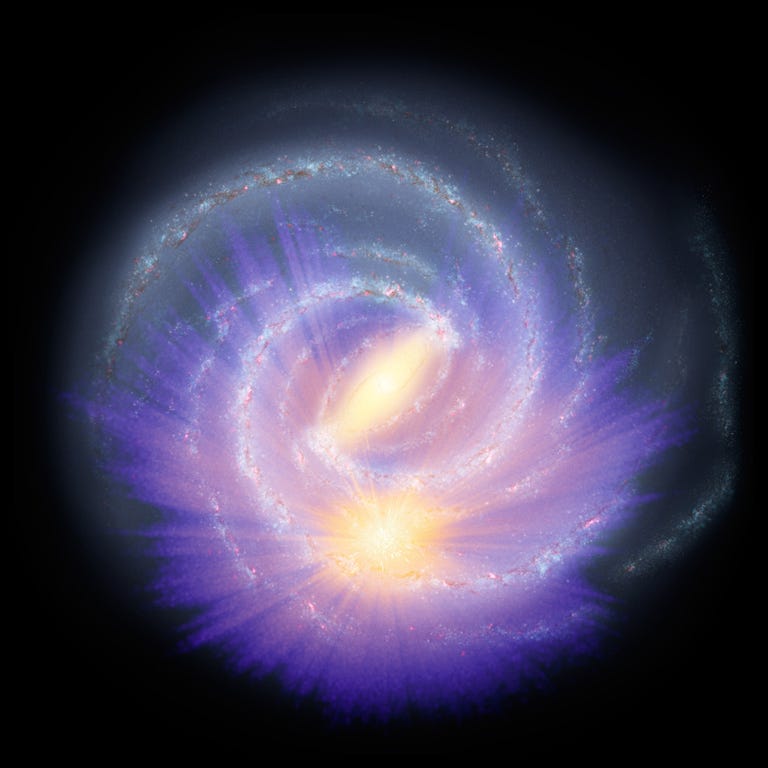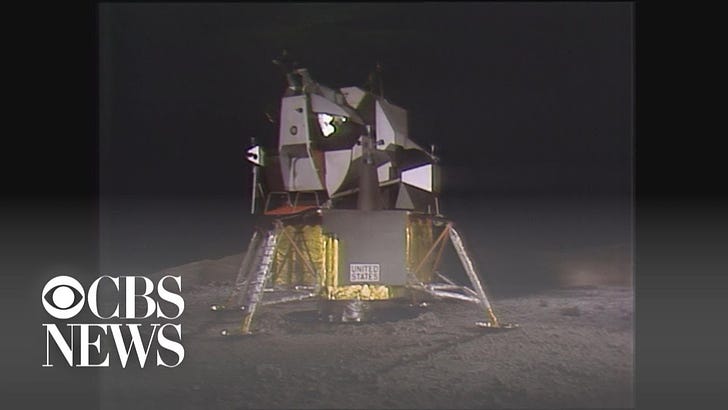Hello everyone!
Welcome to the second issue of The Cosmic Companion newsletter, celebrating the 50th anniversary of the historic Apollo 11 landing on the Moon. We’ll take a look back at this magnificent journey, as well as forward to the future of space.
Let’s take off!
The Week in Space
It was 50 Years Ago Today
Neil Armstrong and Buzz Aldrin became the first men to walk on the lunar surface on July 20, 1969, as Michael Collins piloted the Command Module in orbit around the Moon. This journey was completed less than seven years after JFK’s famous speech at Rice University setting America on a journey to our nearest companion in space.
At the time, NASA did not have any cameras on the lunar surface capable of sending live video of the landing back to Earth. For the CBS coverage of the landing, the network spent over one million dollars (a lot of money in those days) to create a simulation, showing people what was happening during the landing. What they didn’t count on was that the lunar lander was targeted for a football field-sized crater, which Neil Armstrong had to fly over, delaying the landing. This resulted in the lander in the video touching down while Eagle was still searching for a spot to land.
Only five additional Apollo missions successfully landed on the Moon before lunar landings were scrapped in 1972.
Using a Solar Telescope for a Unique Purpose

The McMath Solar Telescope, seen in 1962. Image credit: NOAO/AURA/NSF
In 1964, five years before the Apollo 11 mission, the astronauts who would venture to the Moon studied their target using a unique instrument. The McMath solar telescope at Kitt Peak in Arizona, then the largest solar telescope in the world, was re-purposed for nighttime viewing of the Moon. The trio of Apollo 11, together with groups of other astronauts, traveled to Kitt Peak, where they attended classes on lunar topography and geology, and studied live images of the Moon formed by the massive telescope, from the instrument’s subterranean observation room.
The Mos Eisley Cantina has Nothing on this Galactic Bar

A color chart superimposed on an artistic representation of the galaxy, showing the distribution of 150 million stars in the Milky Way, based on data from the Gaia space telescope. The location of our own Sun is highlighted in yellow, near the bottom-center of the image. Image credit: ESA/Gaia/DPAC, A. Khalatyan (AIP) & StarHorse Team; mapa artístic de la Galaxia: NASA/JPL-Caltech/R. Hurt (SSC/Caltech)
The Milky Way galaxy was once thought to be a plain spiral galaxy, but observations of stars and material in the galaxy taken over the last could decades suggested our family of stars is composed of a central bar leading to its arms.
Now, researchers at the Leibniz Institute for Astrophysics Potsdam in Germany have directly measured this feature for the first time. The data used in the study was collected by the Gaia space telescope, launched in 2013. That mission is managed by the European Space Agency (ESA).
Now We Know What Caused the SpaceX Explosion

A SuperDraco rocket engine similar to the one which exploded in April during a static fire test. Image credit: SpaceX
The explosion of a SpaceX engine in April has gone unexplained until now. The mishap took place on April 20 at Landing Zone 1 at the Cape Canaveral Air Force Station, resulting in a large plume of reddish smoke over the field.
The private space agency, founded by Elon Musk, announced this week they found a leak of nitrogen tetroxide in a propulsion system caused the explosion just one-tenth of a second before ignition of the engine.
The system being tested was designed to carry crews to safety in the event of a catastrophic failure of the launch vehicle. SpaceX has replaced the component which failed in this test, and they report future flights will be safe for space travelers.
China Aims Straight for the Moon

The Yutu-2 rover — The first robotic explorer of its kind ever to explore the far side of the Moon. Image credit: China Global Television Network
One the same week people celebrated the 50th anniversary of the Apollo 11 mission, the Chinese space agency, CNSA, saw their 30-year plan to explore space examined in an article published in the journal Science.
China recently became the first nation to ever set a spacecraft (and rover!) safely down on the far side of the Moon, the Chang’E-4 lander and Yutu-2 rover. Three more flights in the series, including the first sample return mission since 1976, are scheduled to take place during the 2020’s.
Also, on July 19, their prototype space station, the Tiangong-2, crashed down to Earth over the South Pacific. This spacecraft far exceeded its expected lifetime and re-entry took place as predicted.

Coming soon: The First Woman on the Moon: The Past and Future History of Women in Space by James Maynard
Thanks for reading! If you want to keep up with the latest updates and news about astronomy and space exploration, visit www.thecosmiccompanion.com, join our Facebook page, and follow @TheCosmicCompanion on Instagram and @CompanionCosmic on Twitter.
Do you know someone else who would love this newsletter? Please share!
- James


